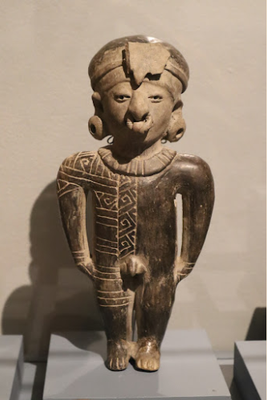About
Known as the Lluvia de Peces or "Rain of Fish," it is said to occur at least once and sometimes twice in a year in the small town of Yoro: during a massive rain storm, hundreds of small silver fish supposedly rain from the sky onto the streets of the small town.
Said to have been happening in the town since the 1800s in the months of May or June, each year a large storm rolls through the town with a very heavy rain, and once the storm has passed, the streets are found flapping and flopping, full of small, still-living fish.
In the 1970s, a National Geographic team actually witnessed the event, making it one of the few credible sightings of such a phenomenon, though proof that the fish were coming from the sky and not another source remained elusive.
Known as "animal rain," this weather phenomenon has been reported around the world for centuries, though the scientific understanding of it still remains sketchy.
In 1823, explorer and botanist Alexander Von Humbolt wrote of the 1698 volcanic eruption of Mt. Carihuairazo which apparently also covered forty-three square miles the surrounding country with mud and fish (possibly from an underground lake connected to the volcano).
By and large, reports of animal rain generally concern fish and frogs, but other, far more disturbing reports have told of birds, snakes, foot-long alligators, jellyfish, mice, spiders, and even a "rain of flesh and blood." In some reports, the animals are already dead when they come crashing to earth, while in others, they are alive, and those that survive the fall—though surely discombobulated—hop or flop away.
The simplest explanation for these animal rains is that large rainstorms force certain animals out of their homes or flood rivers, causing them to fill the streets. Another simple explanation is that a flash flood can deposit fish far from their waters before quickly drying up, leaving spectators to believe that the animals must have come down with the rains.
While these may be the source of many animal rain reports, the Northern Territory News of Australia reported in February 2010 "that food falling from the sky is more than a legend. It was reported that on Feb. 25 and 26, fish landed like rain on Lajamanu, Australia, 200 miles from the coast."
Like the rain of fish in Yoro, it seems that, while extremely rare, animals do occasionally fall from the sky. The likely scientific explanation for this is elegantly simple—waterspouts.
Waterspouts are like little tornadoes which form over a body of water. Though waterspouts do not suck water up into the air (the "spout" is actually condensation), the whirlwind of waterspouts and tornadoes have the ability to lift small animals from the water and into the air, in which cases they can be carried quite far from their bodies of water and released somewhere else. And some tornadoes actually have the ability to suck up entire ponds. Overall, this hypothesis makes a lot of sense considering that most animal rains consist of aquatic creatures.
(In the case of reports of "bird rains," the explanation is different—a flock of one species is overtaken by a particularly sudden and strong wind, blown around for a bit, killed, and, as the wind dissipates, falls from the sky. This also accounts for what might be the most horrific animal rain—the rain of blood and flesh. In this case, the birds are so badly battered that they come down in pieces. Any other animal sucked up into a violent storm could also come back to earth as guts. Although there are also cases where the "rains of blood" have turned out to be made by red dust, a very simple explanation.)
In Yoro, the explanation often offered up is a religious rather than a scientific one. Father Jose Manuel Subirana, a Catholic priest living in the area, prayed that God provide sustenance to the hungry peoples, and, at the end of his marathon prayer session, it is said to have rained small fish. The festival, which began in 1998, is held in honor of the miracle that is the Lluvia de Peces, and a parade is held where effigies of Father Jose Manuel Subirana are carried through the streets.
Among the most mysterious elements of the Departmento de Yoro "Rain of Fish" is that the fish themselves are not local to the area and may be coming from as far away as the Atlantic Ocean some 200 km away, presumably brought by waterspouts sucking them into the sky.
A less exciting theory postulates that the fish live in underground rivers and are actually being forced up from onto the streets rather than falling down onto them. This hypothesis is supported by the 1970s National Geographic's teams finding that the fish are completely blind.
Related Tags
Community Contributors
Added By
Published
June 28, 2010



















